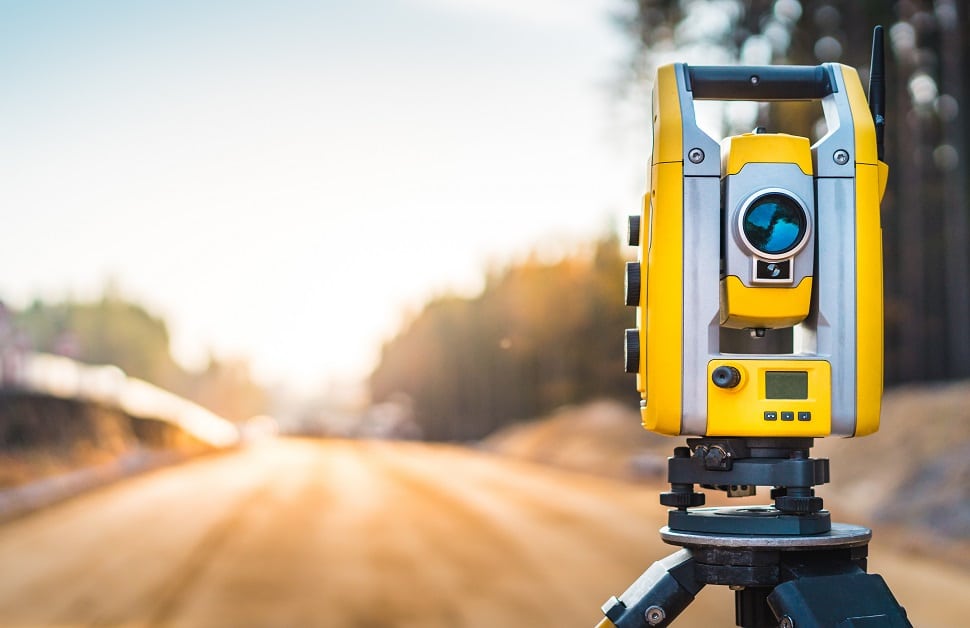Important Tools and Strategies in Laying Out Design
The self-control of laying out design relies heavily on a suite of important devices and methods that underpin the accuracy and effectiveness of task execution. Instruments such as surveyor's levels, complete terminals, and advanced GPS modern technology are vital for establishing precise recommendation points. The combination of typical techniques with contemporary practices, consisting of geospatial analysis and 3D modeling, offers substantial advantages in imagining site problems. Understanding just how these components engage is vital for improving and decreasing mistakes project end results, yet the nuances of their application frequently remain overlooked. What effects does this hold for future engineering methods?
The Significance of Accurate Measurements

The value of accurate measurements extends past mere conformity; they are integral to the general performance of design processes. Mistakes can result in material waste, job hold-ups, and increased labor expenses, ultimately influencing the project's lower line. In addition, precise measurements improve the top quality of the end product, making sure that it carries out as meant and fulfills the assumptions of stakeholders - setting out engineering.
Furthermore, the importance of precise measurements is apparent in numerous design disciplines, including civil, mechanical, and electric design. Therefore, promoting a culture that focuses on accuracy is necessary for the future of engineering.
Necessary Tools for Establishing Out
Setting out, an important phase in the engineering and building and construction procedure, counts heavily on specific tools that make certain precise location and positioning of structures. Amongst these devices, the property surveyor's degree stands out, providing accurate straight measurements essential for establishing referral factors. This instrument allows designers to identify altitude adjustments and maintain harmony throughout the task website.
The total amount terminal is another essential device, incorporating digital range dimension with angular dimension capacities. This innovation improves efficiency and accuracy in capturing spatial data, allowing for reliable website format and planning.
In addition, making use of measuring tapes and noting devices, such as chalk lines or stakes, is fundamental for momentarily noting limits and critical points on the site. These fundamental tools, though basic, are crucial for guaranteeing clear communication amongst the building team concerning task requirements.
Last but not least, general practitioner innovation has obtained traction in laying out procedures, giving real-time positioning data and substantially improving precision over traditional approaches. Collectively, these important tools form the foundation of effective setting out techniques, inevitably adding to the effective execution of engineering and building and construction jobs.
Advanced Evaluating Techniques
Advanced checking strategies play a crucial function in enhancing the precision and effectiveness of design jobs. These techniques incorporate a variety of approaches that give exact data for design and building. Standard methods, such as progressing and triangulation, have actually developed into a lot more advanced methods, including Total Station surveys and International Navigating Satellite Systems (GNSS)
Total Full Article Terminal gadgets integrate digital theodolites with distance dimension capacities, enabling surveyors to collect exact place data with wonderful rate. This technology considerably lowers mistakes related to hand-operated measurements and supplies real-time data processing. GNSS provides unparalleled accuracy for large tasks by using satellite signals to figure out exact positioning, which is necessary for lining up frameworks and ensuring conformity with layout requirements.
Along with these tools, advanced strategies additionally incorporate geospatial analysis and 3D modeling. These approaches allow designers to envision surface and site problems much more successfully, promoting far better decision-making throughout the preparation stage. By employing these advanced surveying techniques, design jobs can accomplish higher official website precision in design, reduce rework, and eventually improve general job success.
Digital Modern Technology in Engineering
The integration of digital technology has reinvented engineering techniques, boosting both performance and precision throughout different techniques. Devices such as Building Details Modeling (BIM) promote the visualization and monitoring of intricate tasks, permitting engineers to work together effortlessly and make notified decisions. This innovation makes it possible for the production of in-depth 3D designs, which can be evaluated for architectural integrity and effectiveness before building starts.

The application of synthetic intelligence and maker learning in design procedures even more improves anticipating maintenance and optimization of sources. In general, electronic technology is improving the engineering landscape, driving technology, and guaranteeing that jobs are completed with better effectiveness and lowered risk.
Best Practices for Execution
When applying digital innovation in engineering, it is crucial to establish a tactical technique that straightens with project goals and business capabilities. An extensive analysis of existing operations and innovation infrastructure is necessary to recognize gaps and chances for improvement. Involving stakeholders early at the same time fosters collaboration and guarantees that the technology meets user needs.

Project managers must take on an iterative implementation method, permitting for adjustments based on real-time Continue comments and performance examinations. This dexterous approach not only reduces dangers but likewise promotes constant enhancement by including lessons found out.
Verdict
In verdict, the integration of essential devices and progressed techniques in laying out engineering is crucial for ensuring accuracy in measurements and effective project execution. Employing instruments such as surveyor's levels, total terminals, and GPS technology, together with contemporary evaluating techniques, improves accuracy and minimizes the probability of errors. Embracing best practices in application better optimizes these procedures, inevitably fostering boosted task results in the engineering and building and construction sectors.
The technique of setting out engineering counts heavily on a collection of important devices and strategies that underpin the accuracy and effectiveness of job implementation.Moreover, the value of accurate dimensions is apparent in different engineering techniques, including civil, mechanical, and electric engineering. By employing these innovative checking techniques, design projects can attain greater accuracy in design, reduce rework, and eventually improve general job success.
In general, digital modern technology is reshaping the engineering landscape, driving innovation, and making certain that jobs are finished with greater performance and minimized risk (setting out engineering).In final thought, the integration of necessary devices and advanced strategies in setting out design is essential for guaranteeing accuracy in dimensions and effective task execution